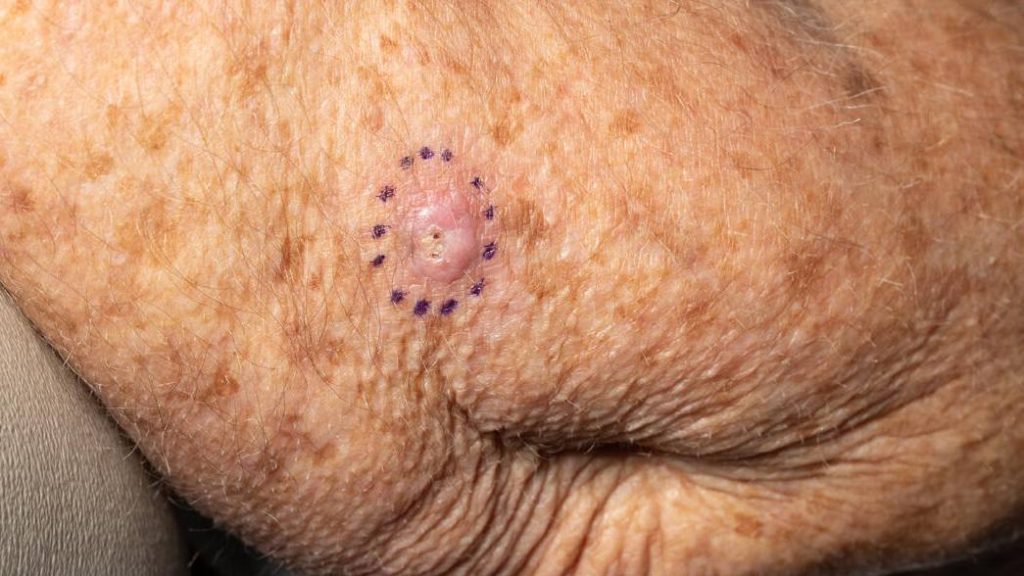Skin cancer is the most common cancer in the U.S., affecting millions worldwide. This cancer comes in two main types: melanoma, which is less common but more deadly, and nonmelanoma skin cancers, which include basal cell carcinoma and squamous cell carcinoma.
Dr. Collin Costello, a Mayo Clinic dermatologist, says these nonmelanoma skin cancers are more prevalent – and with early diagnosis and treatment, the prognosis is good.
Journalists: Broadcast-quality video (1:00) is in the downloads at the end of this post. Please courtesy: "Mayo Clinic News Network." Read the script.
"Both basal and squamous cell carcinoma are often slow-growing skin cancers. They're both caused mostly by the sun," says Dr. Costello.
These cancers are predominantly found on sun-exposed areas, like the face, scalp, neck and ears.
Basal cell carcinoma often appears as a change in the skin, such as a growth or a sore that won't heal, or a slightly transparent bump on the skin.

"For basal cells, they're often a pink bump that slowly enlarges with time. And sometimes they can bleed and be a little tender," Dr. Costello says.

Squamous cell carcinoma may look like a skin-colored bump and can start anywhere on the skin. It’s typically found on sun-exposed areas in sunburn-prone people. However, in those with darker skin tones, it can appear on sun-protected areas, including the genitals or toes.
"Sometimes they can get painful and ulcerated or be almost like a nonhealing wound," he says.
Early diagnosis and treatment for these nonmelanoma cancers are crucial. See a dermatologist if you notice spots changing or growing.
"The majority of the time both basal cell and squamous cell carcinoma are treated with Mohs surgery, particularly when it's on the face, scalp and neck," Dr. Costello says.
Reduce your risk of skin cancer
Use sunscreen daily to help prevent exposure to dangerous ultraviolet rays.
- Wear sunscreen of at least 30 SPF.
- Perform regular skin self-exams.
- See a healthcare professional for abnormal growths or warts.
- Wear protective clothing.
Related posts:
- Mayo Clinic Minute: Skin cancer concerns for people with darker skin
- Mayo Clinic Minute: The A, B, C, D and Es of skin cancer







